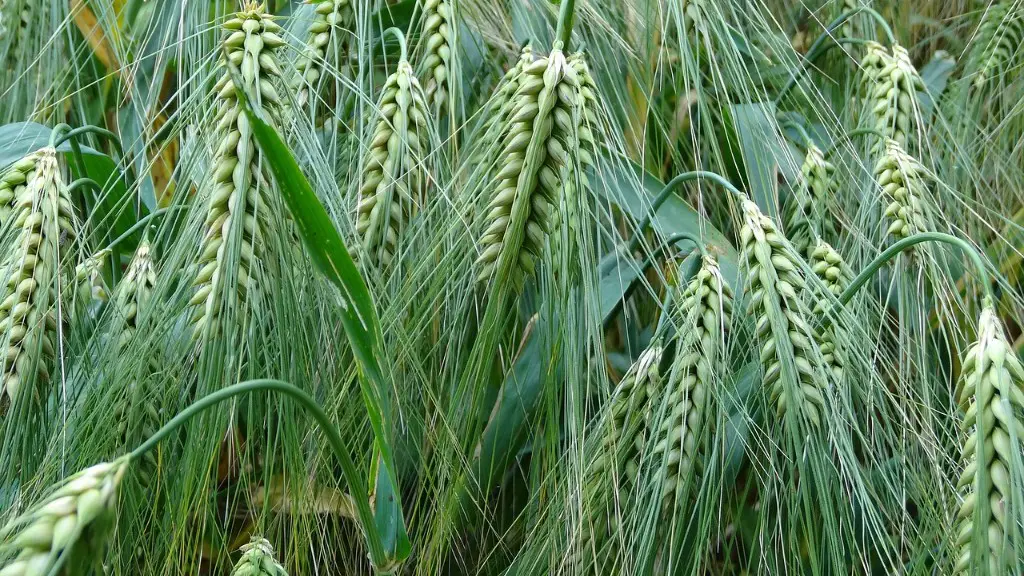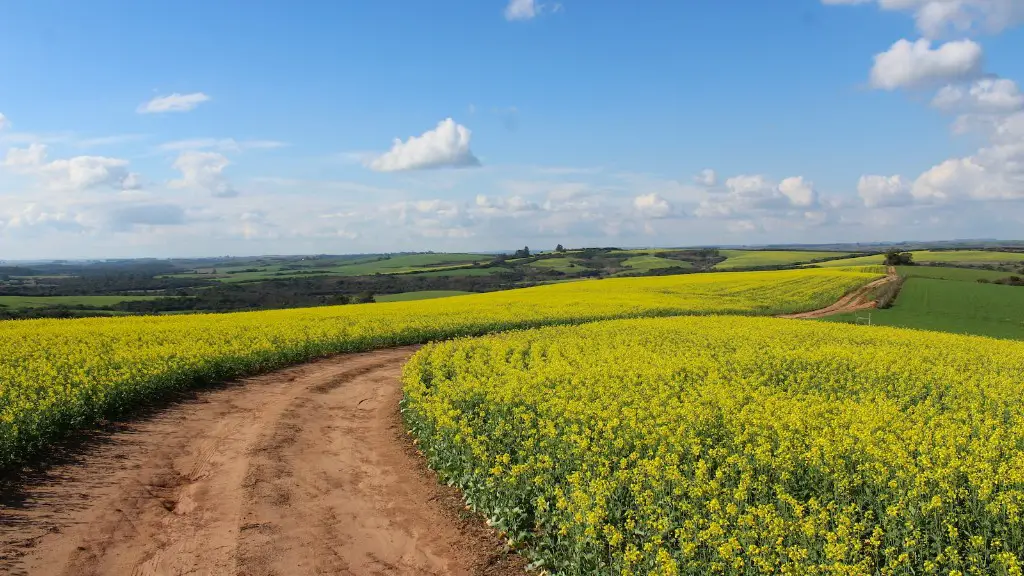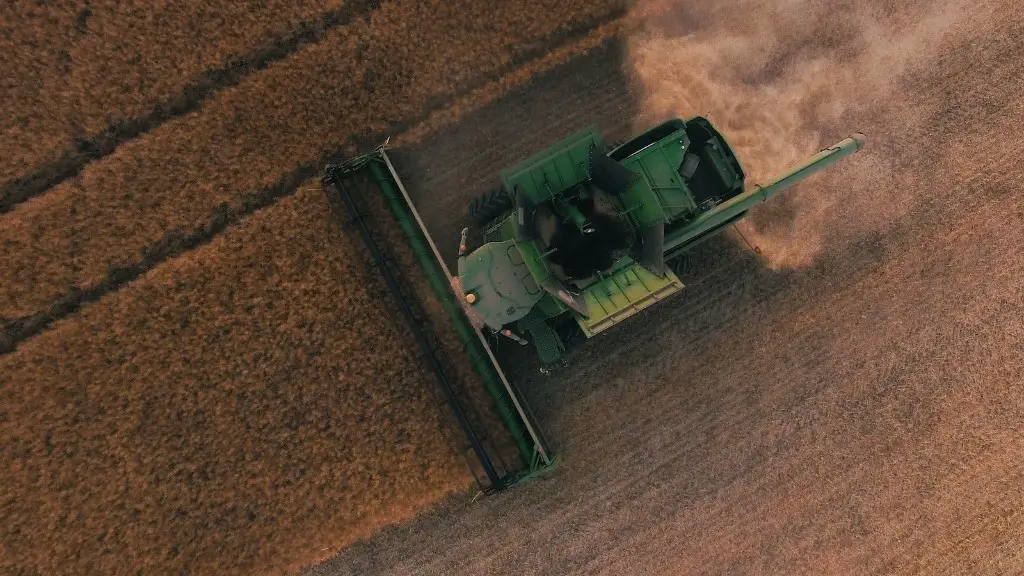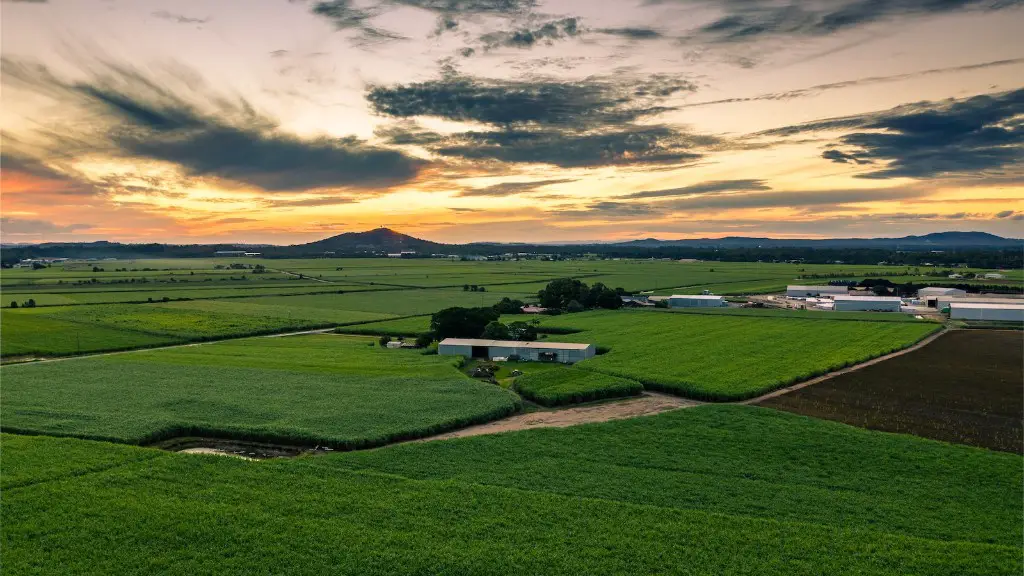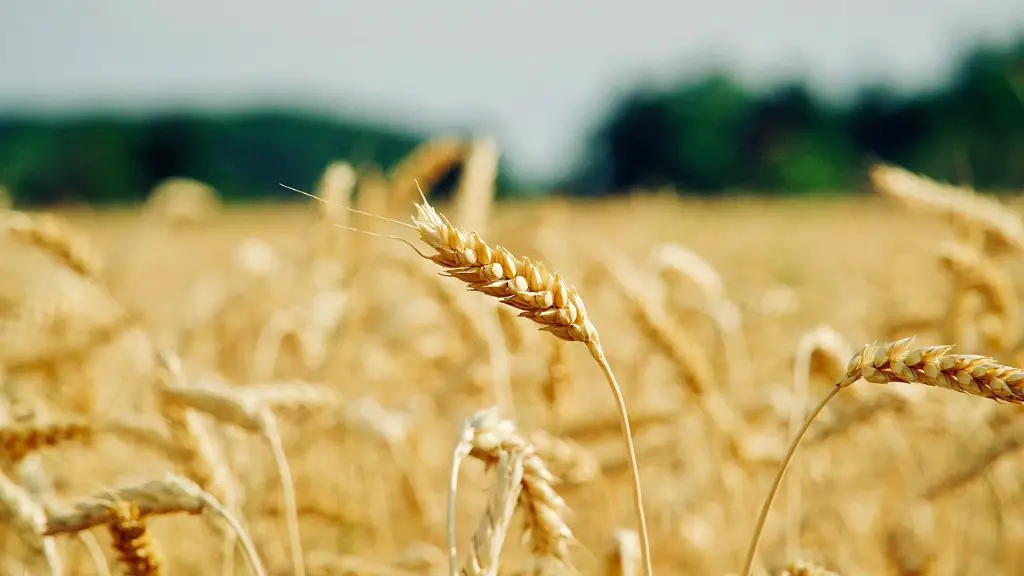Agriculture is a vital part of the global economy, and it is the largest user of water resources. While it provides the food required to sustain life, it also contributes to water scarcity in many areas around the world. Water scarcity is defined as the condition in which surface and subsurface water resources become scarce, either from shortage in natural water sources, or from damage caused by over-utilization. There are a variety of factors contributing to water scarcity and agriculture is one of them.
Agricultural activities compete with other sectors for access to water and the associated trade-offs can have significant impacts on the environment. Agriculture can be a major driver of water scarcity in several ways, such as through growing irrigated crops in areas without enough water to sustain them. Irrigation can also be inefficient and result in large amounts of water loss due to inaccurate water application, as well as water seepage into underground aquifers. Furthermore, over-fertilization of soil is a common problem in farmlands, which can lead to eutrophication of water sources, leading to decreased water quality and availability.
Additionally, the changing climate has had a direct effect on water supply to agricultural fields around the globe. Climate change has increased variability in precipitation patterns and increased the intensity and frequency of drought-occurrence, leading to reduced soil moisture content which in turn leads to decreased crop yields. This is compounded by the fact that monocultural farming systems are often designed to focus on only one crop, which does not allow for crop rotations, leading to further soil degradation and reduced water availability.
Although agriculture is one of the main drivers of water scarcity, there are a variety of strategies that can help to reduce this problem. These include improving water-use efficiency and storage capacity through rainwater harvesting and micro-irrigation; investing in technologies that increase water-use efficiency, such as remote sensing and precision agriculture; and adopting better soil management practices, such as crop rotations and the use of cover crops.
Furthermore, governments and other organizations need to prioritize water management and climate adaptation. This includes supporting sustainable development projects, such as the promotion of water conservation initiatives, as well as providing incentives for farmers to adopt better land management practices, such as promoting no-till agriculture and integrated water management strategies.
Agriculture is a fundamental part of global food security, and its effects on water scarcity cannot be ignored. Despite its impacts, it is possible to reduce water scarcity and its effects by designing better agricultural systems and improving water management policies and practices.
Impacts of Agricultural Water Scarcity on Communities
Water scarcity related to agricultural activities affects the lives and livelihoods of millions of people, particularly in rural and agricultural communities, who rely on natural resources for their sustenance. A lack of access to clean and reliable water for irrigation, drinking and sanitation can create a number of unhealthy and unsafe conditions, such as water-borne illnesses and malnutrition, which can have devastating effects on communities in terms of health and quality of life.
Furthermore, agricultural water scarcity can have severe economic impacts, especially in developing countries. Agriculture is the primary source of income, food and employment in many parts of the world, and decreasing water availability can negatively affect agricultural production, resulting in a decrease in food security, loss of income for farmers, and an increase in the risk of poverty.
Additionally, agricultural water scarcity can have social implications, such as an increase in migration, as more people are forced to move away from rural areas in search of food and work. This can create a host of other social problems, as these migrant communities often lack access to proper education, healthcare and other essential services.
The Role of Government in Reducing Agricultural Water Scarcity
Governments are in a unique position to reduce agricultural water scarcity, as they can influence policy, allocate funding and provide incentives to farmers to adopt water-saving measures. Governments can also introduce laws and regulations to better manage water resources, including limiting irrigation water to certain farmlands, restricting water withdrawals and improving water management in general.
Governments also play an important role in facilitating public-private partnerships, which can help to improve water infrastructure and provide financial incentives to farmers who adopt sustainable farming practices. Furthermore, governments can also help to bridge the gap between households and businesses, ensuring that access to water is equitable and that everyone has access to a sensible amount of water.
Additionally, governments should invest in research and development of new water-saving technologies, such as micro-irrigation systems and water-efficient crop varieties. This can help to reduce water usage and improve agricultural productivity, particularly in water-scarce areas.
Finally, governments need to increase awareness about the importance of water conservation and sustainable water management. This can be done through the development of educational campaigns and raising awareness about the impacts of agricultural water scarcity on the environment, communities and the economy.
How NGOs and the Private Sector Can Address Agricultural Water Scarcity
In addition to governments, non-governmental organizations (NGOs) and the private sector can play an important role in reducing agricultural water scarcity. NGOs can provide technical assistance and financing to improve water-use efficiency and help farmers to develop water management plans.
The private sector also has an important role to play. Businesses can invest in developing water-saving technologies and innovative irrigation systems, such as drip irrigation and sprinkler systems. Companies can also provide direct funding for farmers to invest in water-saving measures and can develop initiatives to promote water conservation.
Furthermore, businesses can provide incentives to farmers to adopt sustainable farming practices, such as reduced water consumption, soil conservation and organic farming. They can also increase access to finance, which can help farmers to invest in sustainable agricultural practices and access resources to better manage their water resources.
Finally, businesses can invest in research and development of new water-saving technologies and systems, such as smart irrigation systems, which can help to reduce water usage and improve agricultural productivity in water-scarce areas.
Women’s Role in Agricultural Water Scarcity
Women are often the most affected by agricultural water scarcity. In many parts of the world, they are responsible for collecting water, gardening and food preparation. These tasks are particularly arduous and time consuming when water is scarce.
Furthermore, women often lack access to economic resources, such as land and money, which limit their ability to access water-saving technologies and water-use efficiency measures. Additionally, they often lack access to agricultural education and management tools, which can increase their vulnerability to water scarcity.
In order to address this problem, governments, businesses and NGOs need to ensure that women have access to resources, such as water-saving technologies, financial capital and educational opportunities. This can help to increase their access to water resources and reduce their vulnerability to water scarcity.
Additionally, communities and organizations should work together to create awareness about the importance of water conservation and sustainable water management. Women should be given a stronger voice and have more power to make decisions about water management and usage. This can also help to ensure that women have access to the resources and opportunities that they need to sustain their livelihoods and decrease their vulnerability to agricultural water scarcity.
Conclusion
Agriculture is one of the main drivers of water scarcity, but with the right initiatives and strategies, it is possible to reduce its impacts. Governments, NGOs, businesses and communities all have an important role to play in reducing agricultural water scarcity and its effects on communities, economies and the environment.
